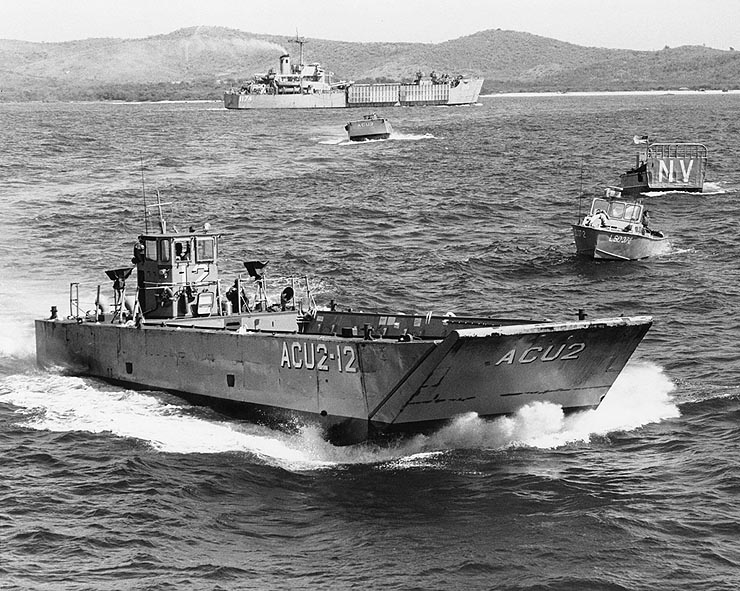
Polish landing craft LCT Mk5 and LCM Mk3

Demonstration landing on the coast of Gdynia, June 1957
The formation of the amphibious assault forces of our fleet began with the entry of US troops from American surpluses and property left by the Germans in the western territories annexed to Poland in the early 50s.
Their history is worth presenting because, firstly, it is almost completely unknown, and secondly, individual units have traveled a short but interesting path before falling under our battle flag.
They were a product created for the needs of an all-out armed conflict. When the United States entered the war, it was known that several major amphibious operations would be needed to win battles in both Europe and Asia. Therefore, many designs of units for the landing troops were created very quickly, which would be capable of transporting and disembarking millions of soldiers, tens of thousands of pieces of equipment and millions of tons of all kinds of cargo. Thousands of units were needed, from large ocean-going landing craft to small boats and amphibians. Among the units designed at that time were those that ended up in the Polish Navy after the war, namely: LCT Mk5 (Landing ship, Tank, Mark 5; landing craft for transporting tanks, model 5); LCM Mk3 (Mechanized Landing Craft, Mark 3; Automotive Landing Craft, Model 3); LCP-L (Danding Craft Personnel, Large; landing craft for transporting people, large). Serial production started. They were created almost sequentially. At 12 shipyards of LCT Mk5 barges in the second half of 1942, as many as 470 units were built. The construction of each individual barge usually took 30 to 50 days, and archival photos from those years show that about a dozen of them were being produced at the same time. After being put into service, some of them were sent to serve in Europe, and some almost immediately went to the Pacific Ocean. The European ones were distributed between the US Navy and - as part of the Lend-Lease program - the Royal Navy. The latter received a total of 164 such barges. Initially, they all received American designations from LCT-1 to LCT-89 and from LCT-119 to LCT-500. Units transferred to the Royal Navy were marked with numbers in the range 2000-2500, in line with former American numbers.
It so happened that all barges of this type, except for one that fell into the hands of the Poles after the war, were transferred to the Royal Navy either at the end of 1942 or at the beginning of the next. The only exception was the LCT-438, although Polish documents from the 40s and 50s found in the archives (to which we will return later) suggest that it bore the designation LCT-2438.
The first front line of European LCT Mk5 operations was the Mediterranean and, for some, landings in North Africa, followed by an operation off the coast of Italy. In early 1944, as part of the ongoing preparations for the landings in France, most of the landing forces were transferred to British ports. Part of the barges was returned to the US Navy. Since it was known that the beaches of Normandy were prepared to repel landing forces, a project was prepared to make them more resistant to enemy fire for many landing craft. In March 1944, the LCT (A) variant ("A" for armor) was developed. According to the plans of this modification, a total of 48 barges received reservations for the wheelhouse, fuel tanks, engine room and landing ramp. In turn, 18 barges became carriers of M7 self-propelled howitzers. LCT (HE) was intended by developers to destroy coastal fortifications with missiles fired from the M7.
Operation Overlord did not end their participation in the war in Europe. One was again sent to the Mediterranean, where he took part in the August landings on the southern coast of France. Some of them were withdrawn from service at the end of 1944. The rest became cabotage taxis between ports on the liberated coasts of France, the Netherlands and Belgium, and later in Germany. Some of them survived in this way even until 1946. After the war, they quickly turned out to be unnecessary property, for which there was no demand in the United States or Western Europe, and therefore they were put up for free sale. This is how the Polish chapter of their history begins for some of them.
